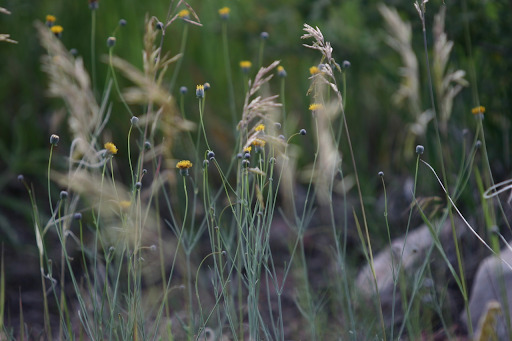#Helianthus pumilus
Explore tagged Tumblr posts
Text

Helianthus pumilus / Little Sunflower on the Red Rocks Trail in Lakewood, CO
#Helianthus pumilus#Helianthus#Asteraceae#Little Sunflower#Sunflower#Native plants#Native flowers#Plants#Flowers#Nature photography#photography#photographers on tumblr#Red rocks trail#Red rocks#Lakewood#Lakewood CO#lakewood colorado#Colorado#🌺🌻
32 notes
·
View notes
Photo

Here's some hairy ladies for you!
#Pingree Park#Colorado Flora#Chrysopsis villosa#Helianthus pumilus#hairy golden aster#dwarf sunflower#mine
0 notes
Text

Helianthus pumilus / Little Sunflower on the Flatirons Vista Trail in Boulder, CO
#Helianthus pumilus#Helianthus#Asteraceae#Little Sunflower#Sunflower#Native plants#Native flowers#Alpine plants#alpine flowers#Wildflowers#Plants#Flowers#Nature photography#photography#photographers on tumblr#Flatirons Vista Trail#Flatirons#The Flatirons#Flatiron#Boulder#Boulder CO#boulder colorado#Colorado#🌺🌻
9 notes
·
View notes
Text
Hopi Tea Greenthread

Scientific Name: Thelesperma megapotamicum
Perennial; 15-30”; full sun; sand, loam, clay; very drought tolerant
Description: Hopi Tea Greenthread (also called Navajo Tea Greenthread) is a perennial wildflower that is common in Colorado’s dry prairies and foothills. It has very thin blue-green stems and foliage and bright yellow blossoms that often seem too heavy for their spindly stalks. It’s common to find some of the wiry plants leaning toward the ground. Tall stems bear a solitary flower bud each, but the species always lends an attractive and interesting effect, both growing in airy colonies and dispersed as accents within diverse plant communities that in Northern Colorado often include fringed sage (Artemisia frigida), needle-and-thread grass (Hesperostipa comata), bush sunflower (Helianthus pumilus), purple prairie clover (Dalea purpurea), prairie coneflower (Ratibida columnifera), and mountain mahogany (Cercocarpus montanus). The leaves are so small and thin that even from a short distance it may appear that there are no leaves at all, but just the solitary buds atop tall, thin stalks. After flowering, the plants continue to add interest with their bulbous, brown, “tufted” seed heads (see picture below). This native perennial belongs to a genus of plants called Thelesperma, which, translated from Greek, means “nipple seed.” Apparently, close inspection of the surface of the seeds will reveal nipple-like bumps. While the scientific name may leave you scratching your head, it’s easy to understand how the genus got its common name of “greenthreads.” Plants in this genus have smooth, thin stems and leaves that seem to be little more than various configurations of green threads. Megapotamicum (Greek roots, Latin suffixes) means “of/belonging to the big river,” which in this case, sources say, is a reference to the Rio Grande. Hopi tea greenthread is not exactly a show-stopping beauty, but it is a terrific plant for pollinator appeal and a great addition to your garden if you’re interested in making your own teas and dyes. This is another of Colorado’s native plants that has a long history of cultural and medicinal uses by Native American peoples, including, as the common names imply, Navajo and Hopi tribes. Its common names reflect its very popular use to this day in making a reportedly delicious tea from boiling or steeping the stems, with or without the flowers. The plant has also been used for hundreds of years to make dyes. It turns out Hopi tea greenthread contains luteolin, a yellow substance that has been used for millennia as the principal compound in yellow dyes. You can harvest cuttings or entire plants -- roots and all -- dry them, and use them later. Hopi tea greenthread is easy to grow in a sunny, dry location, but nurseries usually do not offer seedlings and seed vendors sometimes run out of stock. When buying seed, be sure to check the full scientific name, confirm it’s Thelesperma megapotamicum, or research whatever scientific name you find instead, because other greenthread species are also sold as “Navajo tea” or “Hopi tea.” (A good, widely available substitute for T. megapotamicum that is also native to our area is Thelesperma filifolium. That species is also used for teas and dyes, but is a shorter, 8-15”, V-shaped clumping plant with an abundance of delightful daisy-shaped yellow flowers. It has a shorter lifespan than T. megapotamicum, dying off after a couple of years, but it reseeds itself well.) You can start T. megapotamicum seeds in pots, but because it’s a tap-rooted plant, seedlings must be put in the ground while they are still just a few inches tall. Better yet, direct sow in the fall, lightly scratching the seeds into the soil surface. A sprinkling of coarse sand, squeegee, or small gravel will help keep seeds in place and conserve moisture, as well as mark the seeded area. After the seeds germinate, keep the seeded area evenly moist until the seedlings reach about 5-6”. Normal rainfall will then sustain these plants, which really like their soil quite dry.
Height: 15-30”
Spread/Spacing: 8”/10”
Exposure: Full sun
Soil Tolerances: Adaptable: sandy, loamy, or heavy clay; prefers well-drained soil.
Soil Moisture: Dry to moist
Water: Low; excellent drought tolerance
Bloom: May-October; bright yellow
Pollinator value: High attraction for native bees and other insects.
Deer & Rabbit Resistance: yes, very good
Where they like to grow: Sandy or rocky prairies; roadsides in the plains and foothills.
Photo credit: Madeline Maher

0 notes